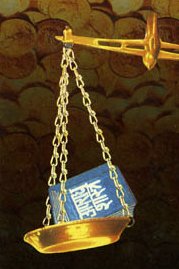Bhikshuki, Bhikṣukī: 5 definitions
Introduction:
Bhikshuki means something in Hinduism, Sanskrit, Marathi. If you want to know the exact meaning, history, etymology or English translation of this term then check out the descriptions on this page. Add your comment or reference to a book if you want to contribute to this summary article.
The Sanskrit term Bhikṣukī can be transliterated into English as Bhiksuki or Bhikshuki, using the IAST transliteration scheme (?).
In Hinduism
Arthashastra (politics and welfare)
Source: Knowledge Traditions & Practices of India: Society State and Polity: A SurveyBhikṣukī (भिक्षुकी) refers to a “mendicant woman” and represents one of the various covers of spies, forming part of a the intelligence apparatus of a state (rājya), according to the ancient Indian science of Society and Polity, as defined in Kauṭilya’s Arthaśāstra (4th century BCE).—Kauṭilya suggests mass participation in intelligence gathering through institutions such as religion. Spies could be under the guises such as Bhikṣukī.

Arthashastra (अर्थशास्त्र, arthaśāstra) literature concerns itself with the teachings (shastra) of economic prosperity (artha) statecraft, politics and military tactics. The term arthashastra refers to both the name of these scientific teachings, as well as the name of a Sanskrit work included in such literature. This book was written (3rd century BCE) by by Kautilya, who flourished in the 4th century BCE.
Languages of India and abroad
Marathi-English dictionary
Source: DDSA: The Molesworth Marathi and English Dictionarybhikṣukī (भिक्षुकी).—f The business or profession of a bhikṣuka- Brahman.
--- OR ---
bhikṣukī (भिक्षुकी).—a Becoming or belonging to the bhikṣuka- Brahman. Ex. bhikṣukī kāvā -akṣara -kharca-bāṇā-bēta. Opp. throughout to gṛhasthī. q. v.
Source: DDSA: The Aryabhusan school dictionary, Marathi-Englishbhikṣukī (भिक्षुकी).—f The profession of a bhikṣuka Brahman.
Marathi is an Indo-European language having over 70 million native speakers people in (predominantly) Maharashtra India. Marathi, like many other Indo-Aryan languages, evolved from early forms of Prakrit, which itself is a subset of Sanskrit, one of the most ancient languages of the world.
Sanskrit dictionary
Source: Cologne Digital Sanskrit Dictionaries: Monier-Williams Sanskrit-English Dictionary1) Bhikṣukī (भिक्षुकी):—[from bhikṣuka > bhikṣ] a f. See below.
2) [from bhikṣ] b f. (of [preceding]) a female mendicant, [Mahābhārata; Rāmāyaṇa etc.]
Sanskrit, also spelled संस्कृतम् (saṃskṛtam), is an ancient language of India commonly seen as the grandmother of the Indo-European language family (even English!). Closely allied with Prakrit and Pali, Sanskrit is more exhaustive in both grammar and terms and has the most extensive collection of literature in the world, greatly surpassing its sister-languages Greek and Latin.
Kannada-English dictionary
Source: Alar: Kannada-English corpusBhikṣuki (ಭಿಕ್ಷುಕಿ):—
1) [noun] a woman who begs or asks for charity; she who lives by begging.
2) [noun] a Jaina nun.
Kannada is a Dravidian language (as opposed to the Indo-European language family) mainly spoken in the southwestern region of India.
See also (Relevant definitions)
Starts with: Bhikshukiparaka.
Ends with: Shakyabhikshuki.
Full-text: Durbhoga, Bhikshukiparaka, Shakyabhikshuki, Bhikkhaka, Dharmayuga, Bhikshuni, Bhikkhuni, Paraka, Bhikshuka, Kshubh.
Relevant text
Search found 5 books and stories containing Bhikshuki, Bhikṣukī, Bhiksuki, Bhikṣuki; (plurals include: Bhikshukis, Bhikṣukīs, Bhiksukis, Bhikṣukis). You can also click to the full overview containing English textual excerpts. Below are direct links for the most relevant articles:
Shishupala-vadha (Study) (by Shila Chakraborty)
Spies in the Arthaśāstra: Conclusion < [Chapter 4 - Activities of spy]
Spies in the Arthaśāstra (2): Sañcāra < [Chapter 4 - Activities of spy]
Amātya according to Kauṭilya < [Chapter 2b - Activities of Minister (Amātya)]
Kautilya Arthashastra (by R. Shamasastry)
Chapter 11 - The Institution of Spies < [Book 1 - Concerning Discipline]
Nationalism in Malayalam Literature < [April – June, 1987]
Reviews < [October - December 1977]
Trishashti Shalaka Purusha Caritra (by Helen M. Johnson)
Part 2: Story of Pavanañjaya and Añjanasundarī < [Chapter III - Hanumat’s birth and Varuṇa’s subjection]
The Skanda Purana (by G. V. Tagare)
Chapter 37 - The Characteristics of Women < [Section 1 - Pūrvārdha]